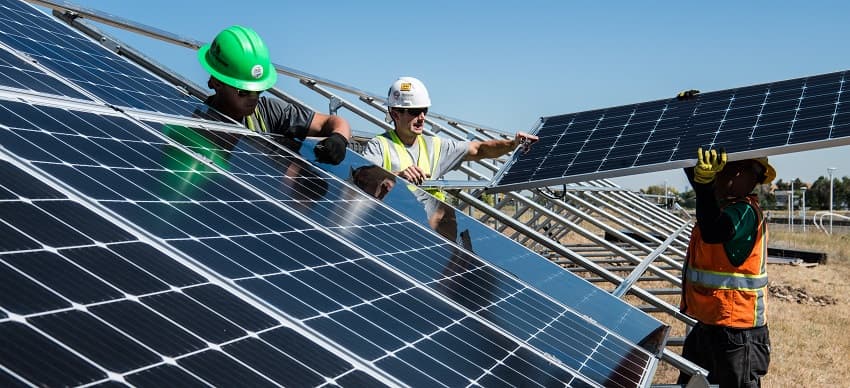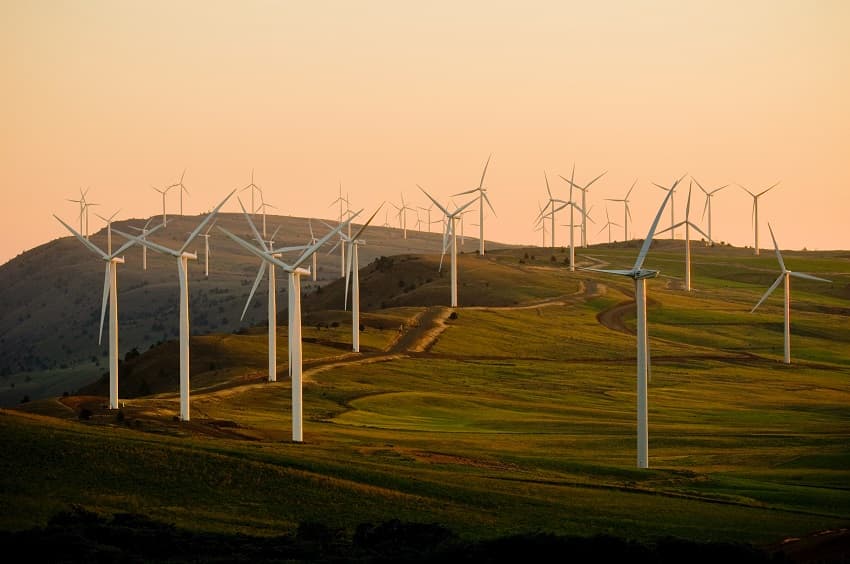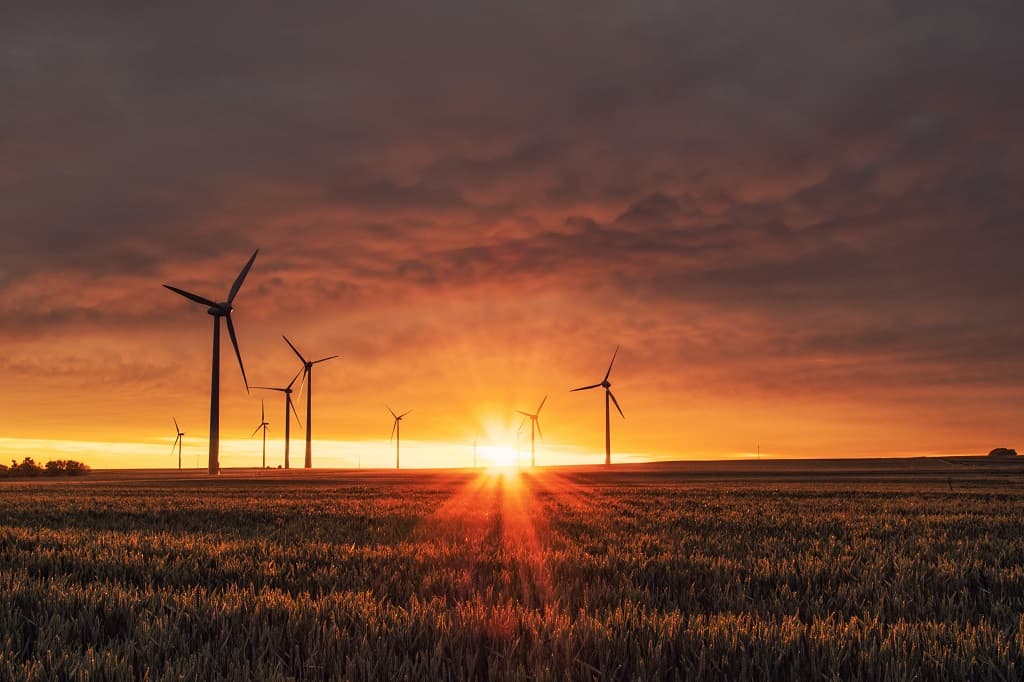A UN-backed investor network report has warned that policies to tackle the climate crisis will result in ‘dramatic changes’ to the value of companies by 2025, with the biggest polluters hardest hit and the greenest companies boosted.
According to the forecast by the Principles for Responsible Investment (PRI) investor network, the 100 most carbon-intensive companies could stand to lose up to 43% of their value, totaling USD $1.4 trillion, while the 100 best performers will gain up to 33% of their value, totaling $0.7 trillion.
According to the forecast, the best performing 10% of companies in the energy sector who invest heavily in renewables will see their valuations more than double, while the worst-performing 10%, with a minimal share of green minerals sales, will see their values halve. Car manufacturers with the highest level of investment in electric vehicles could see their value increase by 108%.
Firms investing heavily in beef cattle are also expected to lose up to 15% of their value, while those investing in meat substitutes are expected to gain at least 10%. Major beef producers in at-risk jurisdictions like Indonesia and Brazil could lose almost half their value because of dwindling markets and legal exposure to lawsuits over environmental impacts including deforestation.
The PRI says that the policies believed to have the greatest financial impact over the forecast period include bans on internal combustion engines by 2035 which lead to reduced demand for fossil fuels, carbon pricing which will be crippling for higher emitters, a disruption in the utility sector amid 93% of total power generation coming from low carbon sources by 2050 and zero-deforestation policies by 2030 that crackdown on commodity supply chains.
The total value of global sustainable investments in 2018 stood at US$ 30.7 trillion, a growth of 34% over two years- which is a little under the combined GDP for the US and China at the time.
As per a report by the Global Sustainable Investment Alliance (GSIA), Europe has the highest value of sustainable investing assets, with nearly half of the total global assets from the region, closely followed by the US. Additionally, green funds are now bearing improved returns from a decade ago, when a 2012 study concluded that they ‘underperformed on a risk-adjusted basis’ compared to traditional funds.
An important part of encouraging green financing is to better manage environmental and social risks, pursue opportunities that bring both a decent rate of return and environmental benefit and deliver greater accountability.
RELATED ARTICLES: How Honest is Green Finance? A Look into Goldman Sachs |Beware of Greenwashing in Finance |Finance Industry Takes a Stand for the Environment |The Innovation Springboard — SDG Finance Summit in Geneva | How Will We Finance the New Deal for Nature?
Benefits of Moving to a Green Economy
Green financing reduces downside risks associated with the climate crisis, such as desertification, water scarcity and loss of ecosystem services, as well as the impacts of local air, soil and water pollution. It should help reduce energy poverty through the provision of low-cost distributed renewable energy systems.
Low, middle and high-skilled job creation is another benefit; it aids in poverty reduction, particularly through improvements in agricultural productivity of rural smallholders. Other opportunities available to governments include the improved health and well-being of the population, leading to higher levels of productivity and reducing the costs of health care, the overarching effect being an economy attractive to investment opportunities.
Investing in sustainable projects leads to not only improved energy security, but it is also a vehicle for innovation. There are growing opportunities for investment in the building, transport, energy and waste sectors in particular, as well as in manufacturing, agriculture, and others. The services sector support that is needed in many of these sectors will also be an important part of the green economy.
Another advantage of green financing is the opening up of new export markets, including for biofuels, solar panels, and wind turbines. With this, sustainable development-related standards and codes will no doubt be implemented and enforced. Governments can focus on enabling exporters to meet such standards, working with the private sector to communicate the content of the regulations and to help firms identify, acquire and assimilate the technologies needed. Secondly, governments can work on developing and enforcing domestic standards that are not too far from those required internationally. Such standards are important in building up private sector capacity to successfully export to demanding key markets.

How Can Companies and States Make the Transition?
In a UN-sponsored report by a panel of experts, strategies were discussed to be adopted by states and companies in transitioning to a greener agenda.
The report states that developed countries have to take the lead in changing their production and consumption patterns while developing countries should maintain their development goals but adopt sustainable practices while doing so. Much of the move towards a green economy will require international collaboration to assist developing countries.
Efforts where this international support could be important include: helping exporters meet stringent international environmental and social standards, both private and public, setting appropriate and ambitious targets for clean energy provision, accompanied by incentives such as feed-in tariffs or quotas, removing subsidies for polluting energy sources and technologies, strengthening social systems to help cushion and facilitate the transition with minimal negative social impacts, investing in education and training, supporting research and development, linking public research and private sector users and identifying and dismantling non-tariff barriers to imports of environmental goods and services such as wind turbines, efficient light bulbs, and environmental engineering.
Beyond supporting developing countries, there are ways in which international collaboration is needed to allow the global community to move towards green economic growth, including: reducing or eliminating tariff and non-tariff barriers and working to get new technologies more quickly to market through international research and development cooperation, support for financing, etc.

Investment is crucial for the green economy and more broadly, sustainable development. The report estimates that just in the area of energy, an average incremental investment (over the baseline case) of more than USD $1 trillion per year is needed up until 2050 to achieve even the minimum required mitigation as described by the IPCC, with two-thirds of this investment needed in developing countries.
Institutional improvements may facilitate a move to a green economy. The UN Environment Programme (UNEP) argues that in some countries this shift will involve improved governance, and adds that transparency and accountability will contribute to this end, which will reduce the probability of misallocation of resources.
Through its resource efficiency program, the UNEP endeavours to offer countries the service of reviewing their policy and regulatory environment for the financing system and developing sustainable finance roadmaps. It also aims to assist central banks and regulators on how to best improve the regulatory framework of domestic financial markets to support and encourage green finance initiatives, and work with policy-makers and private sector leaders to connect to green economy initiatives and catalyze the policy action that inspires and informs both public and private investors.
It is imperative that companies shift their policies towards a more green future or risk closure. In the world of renewable and sustainable technology, there is space and opportunity for every firm and state to be winners. The capital that is allocated today will shape the ecosystems and the production and consumption patterns of tomorrow.
This article has been posted on Earth.org as well. Click here to see it.
In the cover picture: Sunset and Wind Turines Photo Credit: Unsplash
Editor’s Note: The opinions expressed here by Impakter.com columnists are their own, not those of Impakter.com











